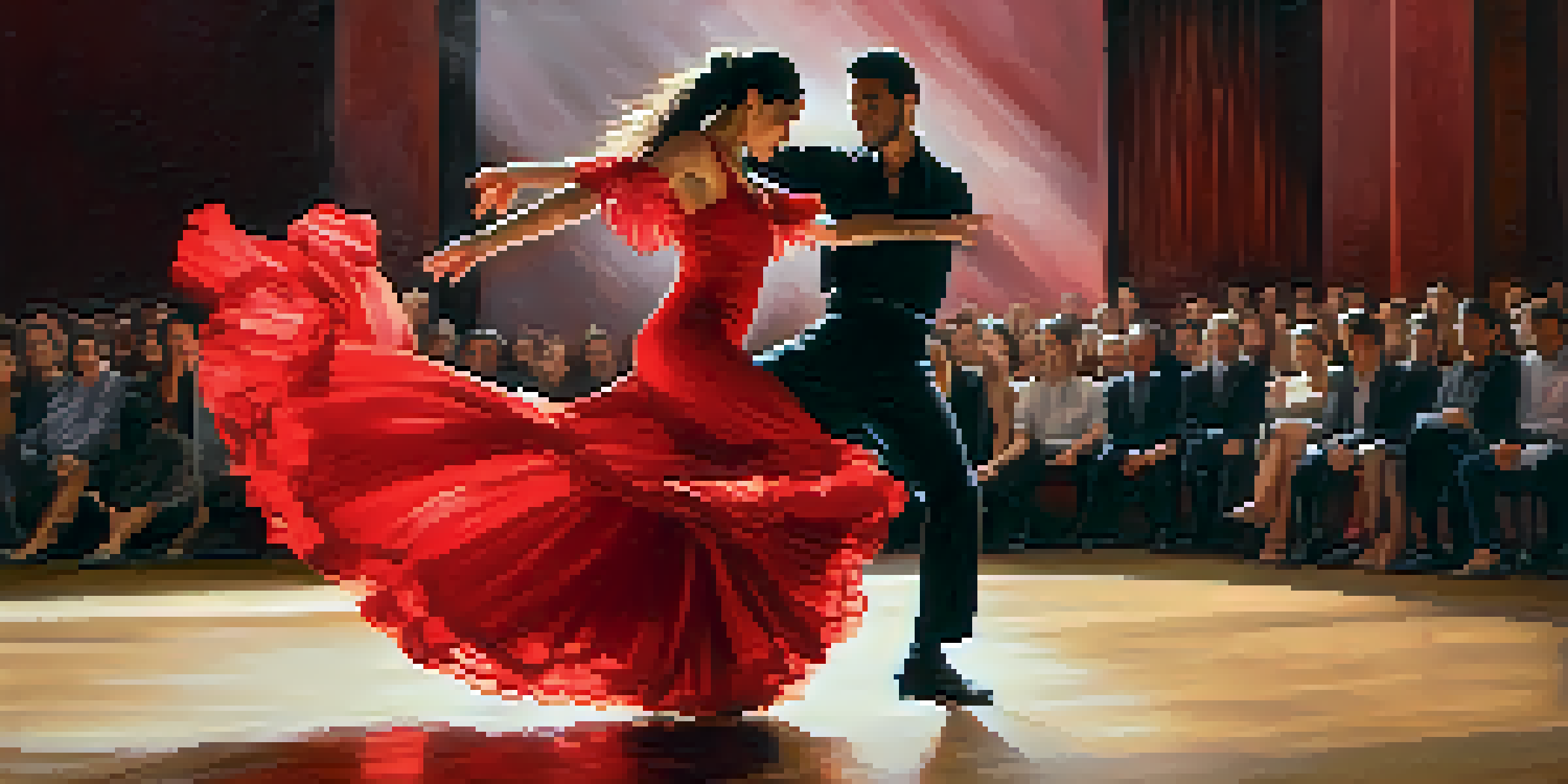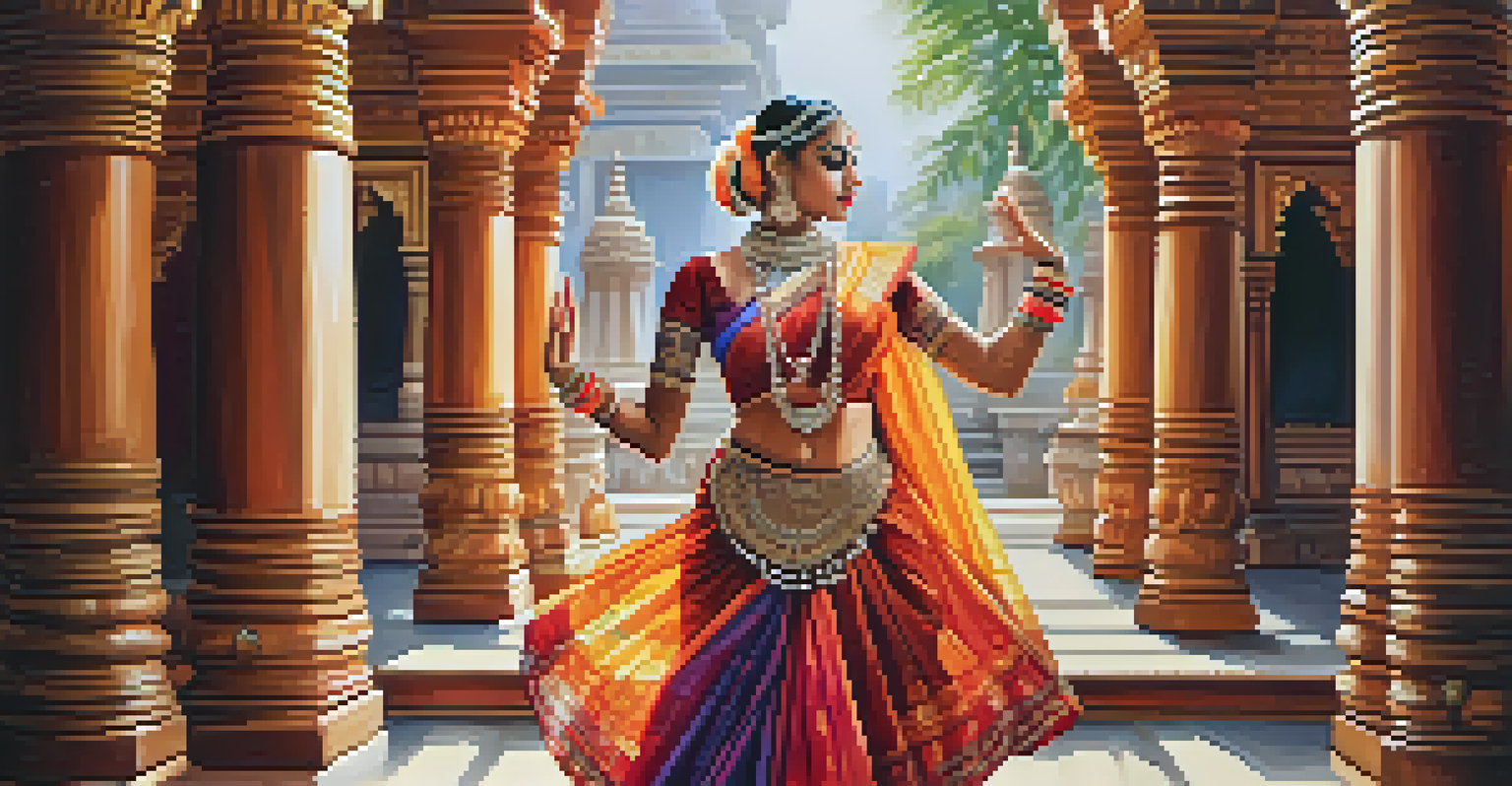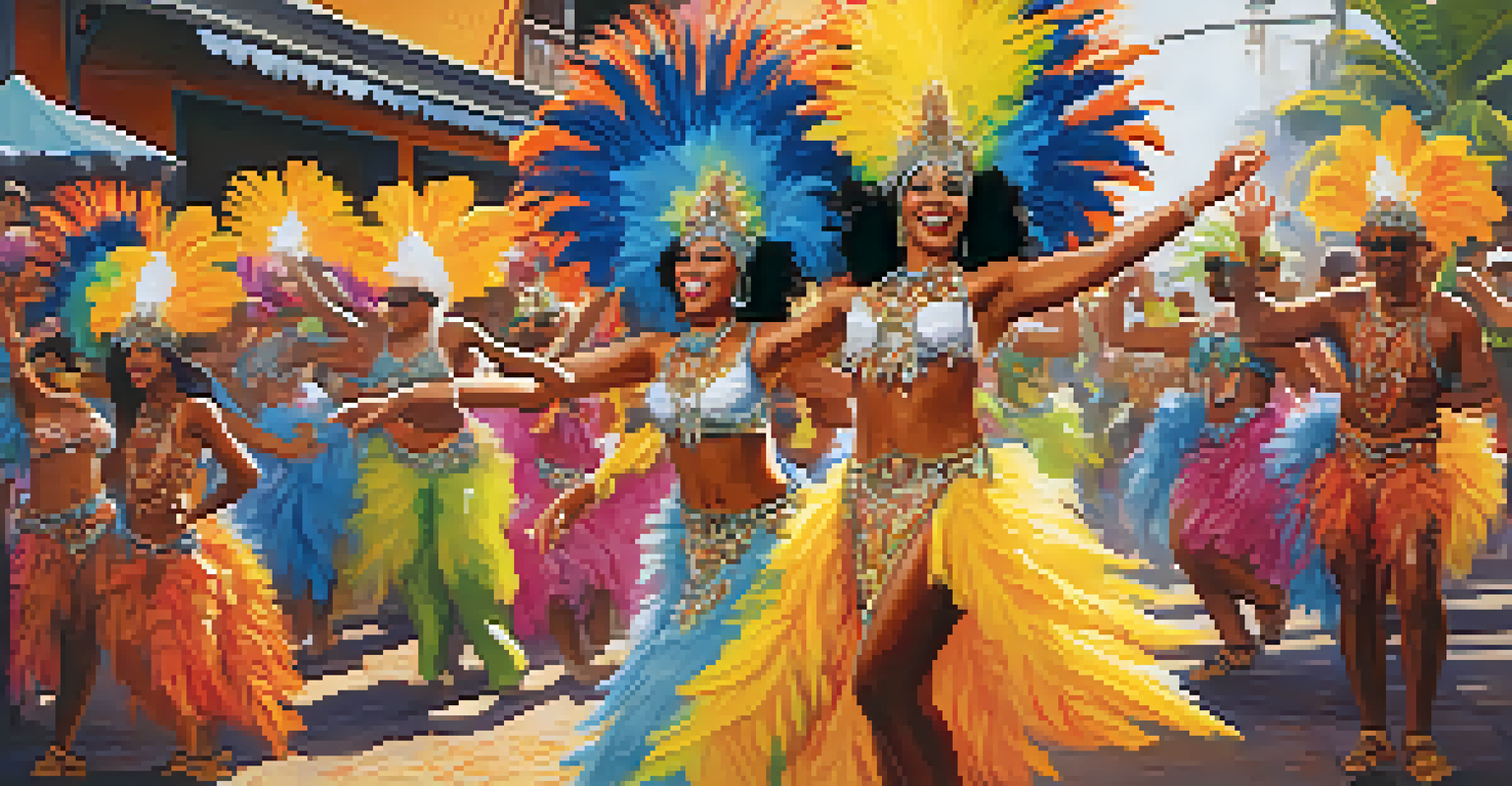Dance Styles Across the Globe: A Musical Exploration

The Rich History of Dance: A Universal Language
Dance has been a form of expression for centuries, transcending geographical and cultural boundaries. From the ancient rituals of indigenous tribes to modern-day performances, it serves as a universal language that connects people. Each dance style tells a story, reflecting the traditions, beliefs, and emotions of its culture.
Dance is the hidden language of the soul.
Take, for example, the traditional dances of Africa, which often celebrate community and heritage. These dances are not just performances; they are a way to pass down history through generations. Similarly, classical ballet, with its roots in the royal courts of Europe, showcases grace and discipline, illustrating how dance evolves alongside society.
As we explore various dance styles, we uncover the rich tapestry of human experience. Dance is not merely about movement; it's an art form that embodies the spirit of its people, enriching our understanding of cultural diversity across the globe.
Flamenco: The Passionate Dance of Spain
Originating from the Andalusian region of Spain, Flamenco is a dance that bursts with emotion and intensity. Characterized by intricate footwork, clapping, and vibrant costumes, it tells tales of love, heartache, and joy. The heart of Flamenco lies in its connection to music, particularly the soulful guitar and expressive singing that accompany each performance.

Flamenco is not just a dance; it's a way of life for many in Spain. Dancers often train for years, mastering the art of expression through movement. The improvisational nature of Flamenco means that no two performances are alike, making each experience unique and deeply personal.
Dance: A Universal Language
Dance transcends geographical and cultural boundaries, serving as a powerful means of expression that connects people worldwide.
As you watch a Flamenco dancer, you can almost feel the stories being told without a single word. This compelling blend of music and movement captures the essence of Spanish culture, inviting everyone to join in the passionate celebration of life.
Bharatanatyam: The Graceful Dance of India
Bharatanatyam, one of the oldest classical dance forms in India, is a beautiful blend of storytelling, music, and intricate movements. Originating from Tamil Nadu, this dance form is characterized by its fixed upper torso, bent legs, and intricate footwork. Each gesture, known as 'mudra,' has its own meaning, allowing the dancer to convey emotions and narratives effectively.
Dancing is like dreaming with your feet!
Traditionally performed by women in temples, Bharatanatyam has transcended its religious roots to become a celebrated art form worldwide. The vibrant costumes and expressive facial expressions add depth to the performances, making each one a visual delight. Dancers often train for years, learning the nuances of this complex art form.
Through Bharatanatyam, dancers not only showcase their skills but also preserve ancient stories and cultural heritage. This dance is a testament to the beauty of Indian traditions, inviting audiences to appreciate the rich history and artistry behind every performance.
Samba: The Vibrant Heartbeat of Brazil
Samba is often synonymous with the lively Carnival celebrations in Brazil, but it is also a dance with deep cultural roots. Originating from African rhythms, Samba is characterized by its quick steps and infectious energy. It embodies the spirit of Brazil, reflecting the joy and resilience of its people.
The dance not only showcases impressive footwork but also involves the entire body, with hips swaying and arms moving in harmony. Samba is more than just a dance; it’s a celebration of life, often performed in groups, fostering a sense of community and togetherness.
Cultural Reflection in Dance
Each dance style embodies the traditions, beliefs, and emotions of its culture, showcasing the rich tapestry of human experience.
When you hear the rhythmic beats of the drums and the cheerful melodies, you can’t help but feel the urge to dance. Samba invites everyone to join in, creating an atmosphere of unity and celebration, making it a perfect representation of Brazilian culture and spirit.
Hip-Hop: The Urban Dance Revolution
Hip-hop emerged from the streets of New York City in the 1970s and has since become a global phenomenon. Known for its dynamic movements and expressive styles, hip-hop includes various dance forms such as breaking, locking, and popping. It is a powerful medium for self-expression, often addressing social issues and personal experiences.
The culture of hip-hop is deeply tied to music, with dancers often showcasing their skills to the latest beats. Street performances and dance battles have become popular, allowing dancers to challenge each other and push their creativity to new heights. The accessibility of hip-hop means that anyone can participate, regardless of background or experience.
As hip-hop continues to evolve, it remains a vibrant and relevant part of contemporary culture. Its ability to adapt and incorporate different influences speaks to the power of dance as a universal form of communication, resonating with people of all ages and walks of life.
Ballet: The Timeless Dance of Elegance
Ballet is often regarded as the foundation of many dance styles, celebrated for its grace, precision, and discipline. Originating during the Italian Renaissance, it has evolved into various forms, including classical ballet and contemporary ballet. The technique involved in ballet is rigorous, demanding years of training to achieve the desired level of artistry.
Each ballet performance tells a story, often drawn from fairy tales or historical events, captivating audiences with its visual beauty. The dancers' ability to convey emotion through movement is a hallmark of this art form, making it a favorite among many. The elaborate costumes and enchanting music further enhance the experience.
Celebrating Diversity Through Movement
Exploring diverse dance forms allows us to appreciate cultural differences while recognizing the common ground we share through movement.
Despite its traditional roots, ballet continues to evolve, integrating modern elements to stay relevant. Whether performed in grand theaters or intimate settings, ballet remains a powerful expression of human emotion and creativity, admired by audiences around the world.
Tango: The Intimate Dance of Argentina
Tango is a passionate dance that originated in the streets of Buenos Aires, Argentina, in the late 19th century. Characterized by close embraces and intricate footwork, it reflects the emotions of love, longing, and desire. The connection between partners is central to Tango, creating a sense of intimacy that is palpable.
Traditionally danced in pairs, Tango has evolved into various styles, each with its unique flair. The music, often featuring the bandoneón, adds to the dramatic atmosphere, enhancing the emotional depth of each performance. Dancers often improvise, allowing for a personal touch in every dance.

As you watch a Tango performance, you can feel the tension and chemistry between dancers, making it a mesmerizing experience. This dance not only showcases technical skill but also embodies the spirit of Argentine culture, inviting participants to explore their own emotional landscapes through movement.
Celebrating Diversity Through Dance: A Global Community
Dance styles from around the world offer a glimpse into the rich tapestry of human culture. Each style is a reflection of its roots, showcasing the traditions, values, and emotions of its people. By exploring these diverse forms of dance, we gain a deeper understanding of the world and the connections that bind us.
Dance has the power to transcend language and cultural barriers, bringing people together in celebration. Whether it's the rhythmic beats of African drumming, the elegant movements of ballet, or the spirited energy of hip-hop, each dance style invites us to share in the joy of expression. It's a reminder that, despite our differences, we all find common ground in the art of movement.
As we celebrate the diversity of dance, we also honor the stories and experiences that shape our global community. Each dance is a thread in the fabric of humanity, weaving together our histories, dreams, and aspirations into a vibrant tapestry of movement and expression.